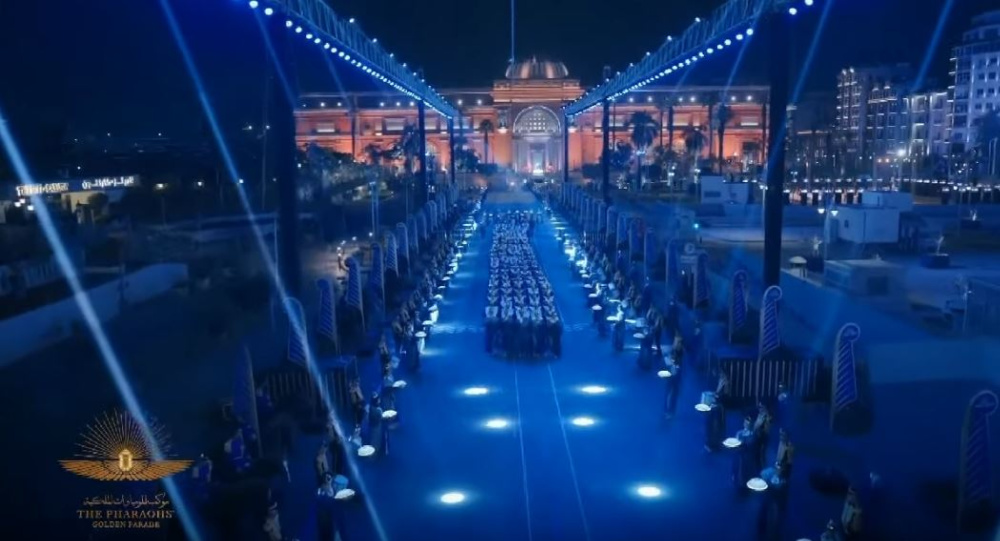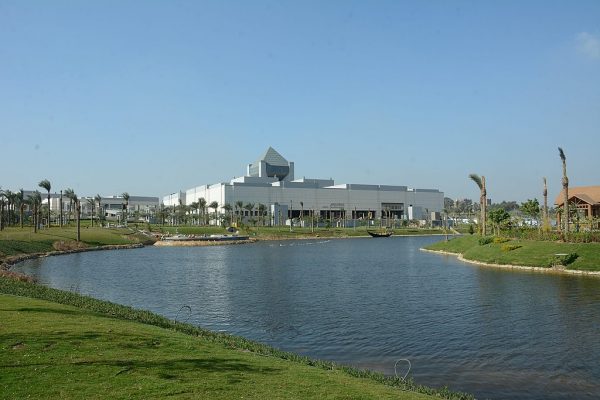The Pharaohs’ Golden Parade, Cairo
The Pharaohs’ Golden Parade, Cairo
The Pharaohs’ Golden Parade, Cairo
-
Hannah
-
Hannah

The 22 mummies, which had been housed at the Museum of Egyptian Antiquities, were moved three miles to the newly opened National Museum of Egyptian Civilisation (NMEC).

The NMEC (source)
The mummies were of the New Kingdom of ancient Egypt and were transported in procession, carriage by carriage, in chronological order of their reigns:
- King Seqenenre Tao
- Queen Ahmose-Nefertari
- King Amenhotep I
- Queen Merit Amun
- King Thutmose I
- King Thutmose II
- Queen Hatshepsut
- King Thutmose III
- King Amenhotep II
- King Thutmose IV
- King Amenhotep III
- Queen Tiye
- King Seti I
- King Ramesses II
- King Merenptah
- King Seti II
- King Siptah
- King Ramesses III
- King Ramesses IV
- King Ramesses V
- King Ramesses VI
- King Ramesses IX
These royal mummies were found in the Royal Cache in Deir El Bahari in 1881 and the Tomb of Amenhotep II in 1898 at Thebes, once capital of Egypt, in Luxor, Upper Egypt.
Of these mummies, two are especially famous: Ramses II, known as the ‘Great Ancestor’, a long-lived king who did many great works, including signing the first peace treaty; and Queen Hatshepsut, one of the very few female pharaohs (more on her in my next blog article).
Moving the mummies was quite the operation: roads were resurfaced, to ensure the journey would be smooth, and each mummy was transported in a nitrogen-filled box. Salima Ikram, professor of Egyptology at the American University in Cairo, explained to the BBC: ‘The Ministry of Tourism and Antiquities has done its best to make sure that the mummies have been stabilised, conserved, and are packed in a climate-controlled environment.’ Each carriage was beautifully decorated and designed to look like an ancient war chariot drawn by horses.
The parade included dance and theatrics, as well as stirring music from the United Philharmonic Orchestra, which featured ‘A Reverence for Isis’, sung in the language of ancient Egypt and based on inscriptions found at Deir el-Shelwit, the ancient Egyptian temple to Isis at Luxor.

The mummies’ new resting place is the Royal Hall of Mummies, which, according to the NMEC museum’s website, has been designed ‘to give the visitor the feeling of strolling down the Valley of the Kings’.
Here, it is hoped, the mummies will remain, for many believe it is wrong to disturb the dead. These ancient kings and queens were mummified so that they may live after death: it was believed that this could only happen if the body was preserved in as lifelike a manner as possible. The NMEC explains that the mummified pharaohs were entombed with everything they might need in the afterlife, and these tombs were then closed and concealed, so that the mummies ‘may be preserved for eternity and carry out their role as a home for the soul in the Afterlife’.
Preserved for eternity… let us hope so.